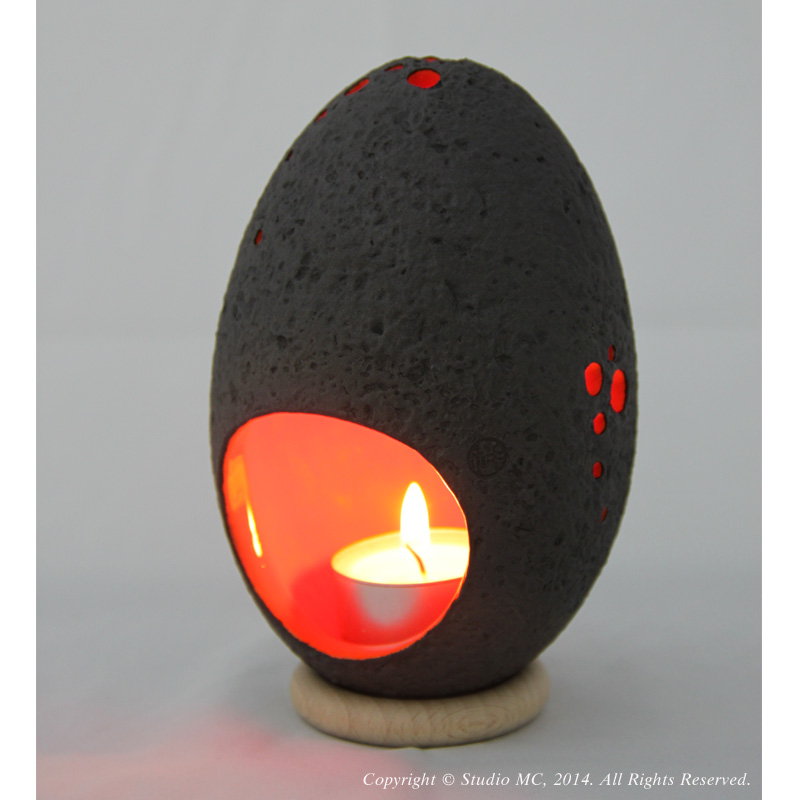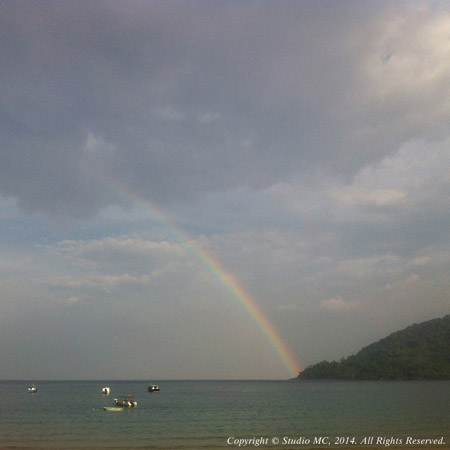SALT & LIGHT
“13 “You are the salt of the earth; but if the salt loses its flavor, how shall it be seasoned? It is then good for nothing but to be thrown out and trampled underfoot by men.
14 “You are the light of the world. A city that is set on a hill cannot be hidden.
15 “Nor do they light a lamp and put it under a basket, but on a lampstand, and it gives light to all who are in the house.
16 “Let your light so shine before men, that they may see your good works and glorify your Father in heaven.”
(Mt 5:13-16 NKJV)

Are YOU…
MAKING a Difference?
LIVING the Difference?
Here’s why and how you Can and Must …
BE the Difference!
You are the LIGHT of the world
What is the color of trees when it is dark at night? Did you immediately think “Black” or “Various shades of grey“?
The correct answer is trees are still green (leaves) and brown-grey (trunks and branches) at night!
That’s one of the most interesting qualities of light. Our ability to see any color is wholly dependent on its presence. In fact, without light there would be no sight at all! Consider just these two qualities of light for a moment: sight-giving and color rendering. You will “see” (pun intended) just how amazing light is. But there’s more.
Within light is all the colors of the rainbow and morea.
Without colors it would be a completely sad world. “‘Nuf said”!
Light is important even for our mental health. Many studies have confirmed the association between darkness (insufficient exposure to light) and depression. During winter in temperate countries, when the days are much shorter than nights, depression is a common ailment. Depression as a result of winter darkness is known as seasonal affective disorder. When University of Pennsylvania Neuroscientists experimented with rats and kept them in the dark for six weeks, they found the animals exhibited not just depressive behaviour (“What? Not in the mood for any cheese?”) but actually suffered damage to certain parts of their brainsb. It’s that serious!
So, light affects our health, especially our moods! Ask anyone who suffers from migraine and they’ll tell you often its because of too bright lights. Someone having a hangover or even just a bad headache will demand you draw the window shades close (and while you’re at it, keep the noise down, but that’s a different story which we might talk about another day).
 Light definitely affects our perceptions and how we feel both physically and emotionally. In darkness, we feel uncomfortable, insecure, even fearful. In harsh excessive light, we feel disoriented, restless and possibly breathless. Yet the right lighting conditions will most definitely put us in a better mood, for rest, relaxation, and even romance. What is a romantic candlelight-dinner without dimming or even switching off the electric lamps and just having beautiful lit candles, preferably scented candles or better yet tea-lights set in lovely, exquisitely hand-crafted ceramic lanterns?
Light definitely affects our perceptions and how we feel both physically and emotionally. In darkness, we feel uncomfortable, insecure, even fearful. In harsh excessive light, we feel disoriented, restless and possibly breathless. Yet the right lighting conditions will most definitely put us in a better mood, for rest, relaxation, and even romance. What is a romantic candlelight-dinner without dimming or even switching off the electric lamps and just having beautiful lit candles, preferably scented candles or better yet tea-lights set in lovely, exquisitely hand-crafted ceramic lanterns? Bright enough lighting is conducive to reading and writing, driving, working, doing just about anything we do daily (and nightly as well). Surgeons need sufficiently strong directed lights to perform delicate operations. Engineers, Soldiers, Pilots and Airport/Seaport personnel need specifically colored lights to do their work, and for safety reasons too. “Soft” lighting is comforting to the body, mind, soul and even spirit. Different lightings are necessary for diverse needs. Nevertheless while right and appropriate lighting conditions can literally help us to see others as well as ourselves in “better light”, often the light we see others by is determined by the kind of light that emanates from within us.
“Persons appear to us according to the light we throw upon them from our own minds”.
(Laura Ingalls Wilder (1867-1957) novelist)c
Something for you to think about, seriously.
Are you an enlightened one?
Have you illuminated, brightened up someone’s life today?
You are the SALT of the earth.
“Salt is a mineral substance composed primarily of sodium chloride (NaCl), a chemical compound” 1 made up of the elements sodium and chlorine.
Sodium as a metal is very harmful. It reacts violently with water and is caustic (i.e. it can cause severe burning). Fortunately, the sodium in our body exists in a form (sodium ions) that is not dangerous unless in large quantities2. In fact, sodium ions are essential in humans and animals for the proper functioning of nerves and muscles, and especially the maintaining of correct fluid balance. If you have ever had “heat cramping”, when your muscles seize or cramp up because of exertion, it is most likely because of low sodium in your body resulting from the loss of salt (sodium ions) through perspiration3.
Similarly, chlorine is very toxic in its natural gaseous state. You might have heard of “mustard gas”, once used in warfare, a notoriously and terribly deadly chemical compound made up of carbon, hydrogen, sulfur and chlorine which when absorbed through the skin forms hydrochloric acid resulting in severe burns and gruesome deaths. Thankfully, the use of this chemical weapon was banned through an international treaty after World War 4 One. Chlorine of course is used in the manufacturing processes of a very wide range of commercial products, in bleaches, disinfectants and even the treatment of drinking water. Nevertheless, in spite of its usefulness, its harmfulness to life and to the environment is not something we want to take for granted. Once more fortunately, chlorine ions in the state as they most commonly exist in our bodies are necessary for normal healthy functions at the cellular level5.
Now, the chemical compound sodium chloride (NaCl) that we know of as “table salt” is an indispensable part of life. Saltiness is one of the most basic of human tastes.
One of the oldest and most ubiquitous of food seasonings, salt has also been used as an important means of food preservation.
 In ancient times, salt was a very important article of trade, prized by many ancient cultures, including the Chinese, Egyptians, Greeks, Hebrews, Romans etc. “Salt Roads/Routes” were built specifically for its transportation and have even been known to be the cause of wars. Whether processed by the slow evaporation of seawater or mineral-rich spring water, or painstakingly excavated from salt mines, there was a time when salt was really scarce and highly prized. Before the Industrial Revolution and the invention of the internal combustion engine as well as earth moving equipment, salt mining was one of the most expensive and hazardous, often fatal, of operations, mostly done by slaves or prisoners. A bowl of salt on the table of a person in ancient Rome, was a mark of his wealth and status, and the guests who sat nearer him were “above the salt” while those who sat further away were deemed less favoured or “below the salt”. In Pliny the Elder’s “Natural History” where he discussed seawater, he stated that “[I]n Rome…the soldier’s pay was originally salt and the word “salary” derives from it” 6. Salt has been used as a disinfectant or “purifying/cleansing agent”, in both the physical as well as the spiritual sense, and even a cure for certain ailments and health conditions. Interestingly, salting of raw meats, is known as “curing” the meats.
In ancient times, salt was a very important article of trade, prized by many ancient cultures, including the Chinese, Egyptians, Greeks, Hebrews, Romans etc. “Salt Roads/Routes” were built specifically for its transportation and have even been known to be the cause of wars. Whether processed by the slow evaporation of seawater or mineral-rich spring water, or painstakingly excavated from salt mines, there was a time when salt was really scarce and highly prized. Before the Industrial Revolution and the invention of the internal combustion engine as well as earth moving equipment, salt mining was one of the most expensive and hazardous, often fatal, of operations, mostly done by slaves or prisoners. A bowl of salt on the table of a person in ancient Rome, was a mark of his wealth and status, and the guests who sat nearer him were “above the salt” while those who sat further away were deemed less favoured or “below the salt”. In Pliny the Elder’s “Natural History” where he discussed seawater, he stated that “[I]n Rome…the soldier’s pay was originally salt and the word “salary” derives from it” 6. Salt has been used as a disinfectant or “purifying/cleansing agent”, in both the physical as well as the spiritual sense, and even a cure for certain ailments and health conditions. Interestingly, salting of raw meats, is known as “curing” the meats. Today of course, salt is used for countless purposes other than just adding taste to food. Roads and pavements are de-iced with salt, which also prevents their re-freezing7, and in the manufacturing process of synthetic rubber salt is used as an emulsifier, just to name a couple of non-dietary uses of the mineral. We have such an abundance of salt today that there is possibly even a tendency to see it as an exceptionally inexpensive and even cheap commodity, available for free almost everywhere. In fact, we are even skeptical of the use of salt these days especially in many processed foods. Salt-free diets have been popular for quite a while now as there have been evidence that too much salt results in high blood pressure and its associated risks of heart attacks and strokes.
 Anyone who has done any cooking or baking will tell you that it just takes a little pinch of salt to bring out the full flavour in the food. If you ever stop to notice, you might just be amazed at how just a little “pinch” of salt actually makes the sweetness of a piece of fruit, a slice of delicious apple for instance, or a crunchy stick of fresh young cucumber, taste even sweeter.
Anyone who has done any cooking or baking will tell you that it just takes a little pinch of salt to bring out the full flavour in the food. If you ever stop to notice, you might just be amazed at how just a little “pinch” of salt actually makes the sweetness of a piece of fruit, a slice of delicious apple for instance, or a crunchy stick of fresh young cucumber, taste even sweeter. Metaphorically speaking, it often just takes a little effort on our part to make life more “flavourful” (in a good sense) in others’ lives. Its often been said that it is the little thoughtful things we do that add up to making a real difference in life… a brief smile, a kind word, a gentle touch, a simple affectionate hug, a little helping hand, a considerate thought, a token of appreciation, some forbearance, a little showing of grace and, a simple expression of love, understanding, compassion, kindness, friendliness, gratitude, forgiveness, support, encouragement, etc., etc.. You get the idea.
If we are “good” salt, i.e. if we haven’t lost our “saltiness” and effectiveness, it means we believe and behave as valuable individuals, able to give, to serve, to contribute to the well-being of the world. Adding “taste” or “flavour” to others’ lives means we make other people’s lives better, richer, more meaningful, more beautiful, more inspired and inspiring, by our living. It means we bring out the very best in others through being our very best self.
Sometimes, we literally affect others’ sense of taste by our own “good taste”.
All of us have this natural tendency to emulate those we deem better informed, more successful than we are, those we respect, love, look up to. Often we unconsciously imitate their ways and see ourselves as more successful, better looking, happier even, by simply mimicking their mannerisms, habits and choices, embracing their thoughts, beliefs and lifestyle. There was a funny story I heard once of a very popular and apparently successful seminary professor who was so looked up to by his students that many of his students started walking around the campus with a thick Bible tucked under their arm, just the way he always walked around. We may laugh about the foolishness of the professor’s infatuated students but the truth is so very often we behave no different. The brands and styles of clothes and accessories we choose to buy and wear, all the consumer products we use, the restaurants we dine in and the food we eat and how we eat, and on and on are all a matter of “taste”. If we are really honest with ourselves, more often than we care to admit, such “tastes”, essentially all of the choices we make daily, are “informed”, influenced by others. In other words, we imitate others. It’s a survival instinct, some might say. Newborn babies “imprint” and mimic the expressions on their mother’s faces when they open their eyes and see for the very first time. Its automatic.
So, life is really in a way a continuous “give and take” kind of thing. “No man is an island” 8 is more true than we usually like to think. We live in a totally connected world. We take in the information, what we observe, i.e. the “tastes” of those we respect and look up to, and others who respect us and look up to us are in turn influenced by us, “informed” by our “tastes”. Interestingly, we look up to some people more than others and consequently their opinions and choices in everything, including as seemingly inconsequential a matter as the kind of trash bags they use, have a seemingly greater impact on us than others. These are the “connoisseurs” in our lives who have a much greater impact in shaping us and defining who we are and how we live. Hopefully they have “good taste” and add true value to us, and make a good and positive difference in our lives, which in turn help us to do the same for others.
Let us therefore be mindful of who we emulate and imitate9, and be ourselves worthy models of all that which is good and true, right, faithful, pure, meaningful, beautiful, healthy and wholesome.
“To laugh often and much;
To win the respect of intelligent people and the affection of children;
To earn the appreciation of honest critics and endure the betrayal of false friends;
To appreciate beauty;
To find the best in others;
To leave the world a bit better, whether by a healthy child, a garden patch, or a redeemed social condition;
To know even one life has breathed easier because you have lived.
This is to have succeeded.” 10
BE the Difference!
___________________________________________________________________________________________________________
References
a http://en.wikipedia.org/wiki/Light
b http://www.scientificamerican.com/article/down-in-the-dark/
c http://www.goodreads.com/quotes/519713-persons-appear-to-us-according-to-the-light-we-throw
1 http://en.wikipedia.org/wiki/Salt
2 “The World Health Organization recommends that adults should consume less than 2,000 mg of sodium (5 grams of salt) per day.”
See http://en.wikipedia.org/wiki/Salt.
3 http://www.chemicool.com/elements/sodium.html
4 https://answers.yahoo.com/question/index?qid=20090211074830AASsLH2.
Also see http://en.wikipedia.org/wiki/Chlorine#Use_as_a_weapon.
5 https://answers.yahoo.com/question/index?qid=20081014111125AAKyx3o
6 http://en.wikipedia.org/wiki/Salt_mining#cite_note-7
7 http://chemistry.about.com/cs/howthingswork/a/aa120703a.htm
8 http://www.phrases.org.uk/meanings/no-man-is-an-island.html
9 “Imitate me, just as I also imitate Christ.” (1Co 11:1 NKJV)
10 http://www.gurteen.com/gurteen/gurteen.nsf/id/X0022B066/
11 http://www.chemicool.com/elements/sodium.html, and http://www.maldonsalt.co.uk/About-Salt-Salt-interesting-facts.html

